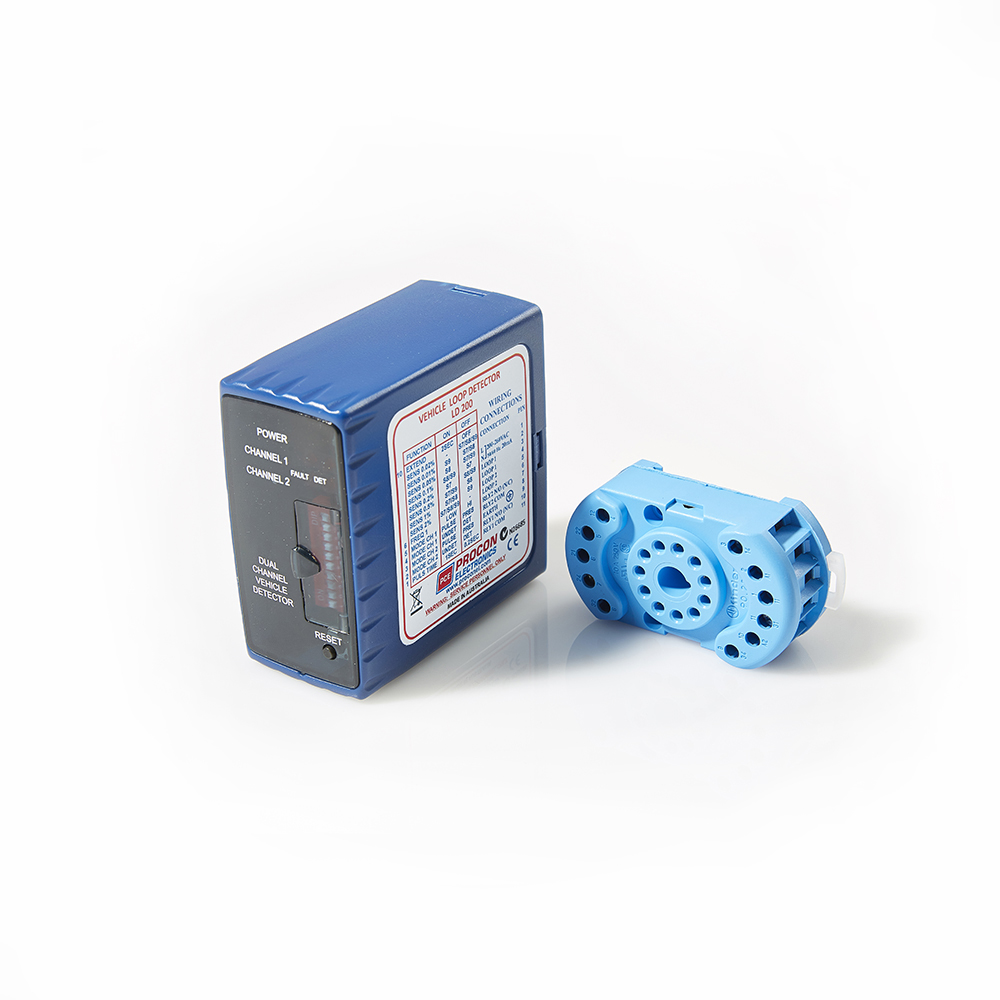Description
LD202 – 12/24Vac/dc Dual Channel Boxed Loop Detector
More commonly used for a free exit or a safety device, the Procon LD200 is an 11 pin detection relay offering pulse or presence relays and can switch between Detect and Un-detect. The detector is connected to an inductive loop inserted into the road surface. When vehicles pass over the loop the detector switches a relay.
This output can be used for a number of functions-
Free entry
Free exit
Safety
Arming loop for presence for intercoms or swipe systems operated by vehicles to avoid unwanted calls etc….
Count systems
Traffic control systems
Directional control using the A-B logic
The LD200 or LD202 is the perfect choice for the installer. The advanced features will aid any installation with the LED status lights and the very wide range of sensitivity settings. You also have features such as the ABS, frequency and extended time feature. Easy to set up with a handy 11 pin “din Rail” mount.
Installation advice
The key factor of any induction loop is the ground condition it is going to be cut into. There are many ways to install induction loops and in many shapes and sizes. There are no set shapes but the basic rectangle is the most common. Installed into the road or pathway, the induction loop should be positioned where it will detect what passes over it at all times. The induction loop works with the principle of magnetic detection from the mass of a moving vehicle and not a pressure pad as sometimes thought.
The most common loop installation is to cut a slot in the road to the approximate depth of 50mm x 6mm in a rectangle shape with a feeder slot cut back to the control panel or controller. Once the cables have been laid and pushed down into the slot this should be backfilled with a hot melt road tar or appropriate sealant.
The slot needs to be clean and free from dust and water.
Starting at the controller position, install the induction cable into the slot being careful with the corners and not pulling it too tight(when cutting the loop slot, cut the corners at 45 degrees to eliminate the sharp 90 degrees corners). Install the cable with 3 complete circuits and pull the cable along the feeder slot to where the controller is positioned.
From the rectangle position, twist the feeder cable to approx 20 turns per metre and wire both cores directly into the handy, 11 pin relay base of the detector.










